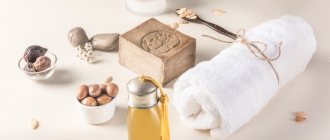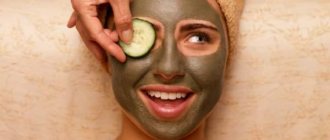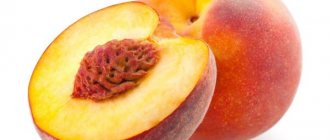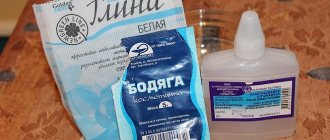Nature can give us everything we need for health. And one of these unique and natural gifts is the rose hip.
Surely each of us was given tea from its fruits to strengthen us in childhood. But today we will talk about the oil of this plant, which is in no way inferior in its beneficial properties to other similar products.
To obtain just a small amount of the product, you need to process a handful of seeds found in rose hips. It is mined in two ways:
- Thermal extraction;
- Cold pressed.
The resulting bitter liquid has a hue ranging from pinkish, orange to brown. Such diversity should not be surprising: it depends on the type of plant, and also in what conditions it grew.
Rosehip composition
Ripe rose hips contain 14-60 g of water per 100 g, 1.6-4 g of proteins, 24-60 g of carbohydrates, 4-10 g of dietary fiber, 2-5 g of free organic acids; 23-58 mg of potassium, 5-13 mg of sodium, 26-66 mg of calcium, 8 and 20 mg of magnesium and phosphorus, 11.5 and 28.0 mg of iron, 2.6 and 6.7 mg of provitamin A, 0 .05 and 0.15 mg of vitamin B1, 0.33 and 0.84 mg of vitamin B2, 0.60 and 1.50 mg of vitamin PP, 470 and 1200 mg of vitamin C, respectively. Rose hips also contain copper, manganese, chromium, molybdenum, cobalt, vitamins B6, K, E, tannins and dyes. There is 5-10 times more vitamin C in rose hips than in black currants, and 40 times more than in lemons.
In what cases is it used
Rosehip oil is not suitable for everyone: it should be applied with extreme caution if the epidermis is excessively oily. But if you need intensive skin hydration, this product is perfect.
Healing oil is used mainly in the following cases:
- with severe peeling and dryness of the skin;
- with the formation of small pimples and redness;
- when age spots and dark circles appear in the eyelid area;
- when wrinkles and loss of skin elasticity occur;
- with prolonged exposure to sunlight;
- with swelling and the appearance of “bags” in the eye area.
The product is especially indicated for women after 30 years of age, when wrinkles become more noticeable. When used correctly, the oil has a pronounced antioxidant effect, smoothing out existing wrinkles and stopping the formation of new ones. The result usually appears after 2 weeks: the contours become clearer, the skin becomes elastic and moisturized.
The cost of the product depends significantly on the manufacturer, region and manufacturing method and varies from 60 rubles to 1,000 rubles per bottle. For the oil to provide maximum benefits to your skin, it must be cold pressed rather than extracted using lye. The label of a quality product should say 100% undiluted (natural).
For skin care, choose natural rosehip oil obtained by cold pressing.
Precautions and contraindications
The most important thing to consider before starting to use the oil is to not overuse the product. This is especially true when using a pure product that is not mixed with other ingredients. The fact is that too often applying thick oil to oily skin can cause clogged pores and acne formation. Therefore, when determining the frequency of its use, be sure to take into account the characteristics of the epidermis.
Young women under 30 are advised not to apply wild rose oil at all: at a young age, the skin does not need such powerful antioxidant support.
In addition, before using it on the face, you should definitely check that there is no individual intolerance to the product: allergies to this oil are quite common and manifest in the form of hives, itching and other unpleasant consequences. Apply a couple of drops 24 hours before first use to the area behind the ear or the inner crease of the elbow. If no traces of a negative reaction have appeared on the treated surface during the specified time, then you can begin the sessions.
During pregnancy and lactation, experts advise consulting with a doctor first: using any new cosmetic product during these periods is fraught with unforeseen consequences.
If you are pregnant, you should consult your doctor before using rosehip oil.
Harvesting rose hips
Like any other plant, especially a medicinal one, rose hips are not recommended to be collected in areas located near industrial enterprises and not far from major highways. It is best to collect rose hips in mid-autumn. It is at this time that the fruits of the plant contain the maximum amount of useful substances, in particular ascorbic acid (vitamin C). But you should still pay attention to weather conditions during harvesting, as they can greatly affect the quality of the harvested fruits.
If the fruits are to be dried, it is recommended to choose slightly unripe, dense and shiny berries. During the collection process, the stem of the fruit should not be damaged. In this case, vitamin C in the fruits after drying will remain much longer. In general, this plant retains its beneficial properties better than others during the drying process. Several methods are used to harvest the fruits of this plant.
It is recommended to dry rose hips immediately after assembly, and not after some time has passed. The time during which the fruits were dried affects the concentration of vitamin C. The shorter the drying time, the better the ascorbic acid is preserved. The fruits must first be sorted out, the bad ones removed, but not subjected to the washing process, but simply placed unwashed in the oven, spreading them in one layer on a metal sheet.
The oven temperature must be set to 40C, and then gradually increased to 60C. The oven door should be kept slightly open. Drying rose hips must be done carefully and ensure that they do not burn. It is recommended to continue the drying process for approximately nine hours.
Contraindications
The main contraindication is individual intolerance. To find out how you react to rosehip oil, apply a small amount to clean skin on the crook of your elbow. When there is an allergy, within half an hour redness will appear, possibly a rash or swelling. If several hours have passed and the skin remains clean and healthy, you can use this product as part of your homemade masks and other skin care cosmetics.
Other contraindications:
- Furunculosis, acne - this drug is categorically not suitable for the treatment of purulent acne; using it will only worsen the situation.
- Excessive oily skin and associated problems - rosehip oil will not help you solve them; on the contrary, it will cause harm if you use it with increased oiliness.
How to prepare rosehip decoction
A decoction of rosehip fruits and roots has many beneficial properties. It is a multivitamin, choleretic, weak diuretic, lowers blood pressure, promotes the production of red blood cells, strengthens the vascular wall (used for nosebleeds in children), and improves appetite. Particularly popular is the infusion of rose hips, which is prepared as follows: crush 2 tablespoons of dry berries, pour 2 cups of boiling water, leave in a thermos for 6-8 hours, be sure to strain through several layers of gauze. Children drink from 1/4 to 1/2 glass, adults a glass three times a day before meals for three weeks.
To prepare the decoction, take the berries in the same proportion, but first boil them in a closed enamel container for 10-15 minutes, leave for two hours, the doses are the same. For taste, you can add citric acid and sugar to the rosehip infusion and decoction.
Decoctions and infusions of rosehip are used all winter for the prevention and treatment of hypo- and avitaminosis C and P, which manifest themselves in impaired permeability of the walls of blood vessels; and also as a general tonic for infectious diseases, liver and biliary tract diseases.
Where is the best place to buy and how to store
It is best to purchase products for the care and treatment of face and body at trusted points of sale. Several varieties of rosehip oil can be purchased at different pharmaceutical outlets, but the price at the pharmacy does not always correspond to the quality and freshness of the product. A much greater variety is presented on the Internet pages, as well as how much it will cost.
When choosing a product, you need to pay attention to the method of its production. The best option is cold pressing the seeds , because this method allows you to preserve the maximum amount of vitamins, microelements and oils unchanged.
Oils must be sold in dark glass containers, with the correct labeling and the Latin name of the product - rosa mosqueta, rosa rubiginosa, rosa canina .
The shelf life of natural oil does not exceed 6 months. This is how much vitamins in the product remain unchanged. It is necessary to store in a dark place at a temperature from +5°C to +25°C.
How to make a water infusion of rose hips
Taking water infusions of rose hips dramatically replenishes the body's needs for vitamin C, helps increase endurance, increases the body's resistance to infectious diseases, intoxications, and the effects of adverse meteorological factors.
1st method of preparing rosehip infusion
The rose hips are crushed so that the grains remain intact. Brew: one part berries to six parts boiling water. Boil over very low heat for 10 minutes. Leave for 1.5-2 hours. With this preparation option, 90% of ascorbic acid goes into infusion and enhances the effect of microelements (copper, potassium, calcium, iron, manganese, phosphorus, magnesium, silicon). 2nd method of preparing rosehip infusion
1 tbsp. Rose hips are poured with a glass of boiling water and boiled over low heat for 10 minutes. Infuse for 24 hours in an enamel container with a tightly closed lid. Strain. Drink 0.5-0.75 glasses a day - dose for adults, reduce by half for children. You can add a third of a teaspoon of honey. It is not advisable to add sugar to rose hips.
3rd method of preparing rosehip infusion
Useful for people with cardiovascular diseases.
Grind the fruits in a mortar, pour boiling water at the rate of 10-15 g per 1 glass of boiling water, boil for 2-3 minutes and pour the whole mass into a thermos. After 3-4 hours, the infusion is ready for use. Carefully strain the infusion through several layers of gauze (“hairs” have a damaging effect on the mucous membrane of the digestive canal). Drink 50-100 ml 3 times a day between meals to improve the taste, you can add a teaspoon of honey on the tip.
4th method of preparing rosehip infusion
On the first day, put 25 rose hips in a thermos and pour a glass of boiling water. It is advisable to cook in the evening so that the rosehip steeps overnight. Strain in the morning and drink a glass throughout the day. Do not throw the rose hips out of the thermos and in the evening add another 20 pieces and pour a glass of boiling water. Strain in the morning and drink throughout the day. On the third day, add 15 pieces to the same berries and do everything as described above. On the fourth day we add 10 pieces of rose hips, on the fifth - 5 pieces. Then on the sixth and seventh days we do not add berries and pour only a glass of boiling water. On the morning of the eighth day, strain, discard the berries and repeat everything all over again. This method is good because every day we receive not only a sufficient amount of vitamin C, but also all the vitamins and microelements that rose hips are rich in.
Efficiency and result
Rosehip oil is very effective in helping to cope with skin defects, dryness, peeling and healing of small wounds and cracks. Practice confirms this. Many of my clients who used rosehip oil noticed results appearing in less than a month. The face looks younger, the skin becomes softer and tighter. This is not surprising, because the product contains a lot of useful components that are simply created to care for our skin.
But remember that the effect does not appear immediately, but after three to four weeks, and wrinkles, of course, do not disappear completely. However, the general condition of the face for the majority becomes better - the color evens out, tone and elasticity return. Those with flaky skin also speak well of the product. Thanks to rosehip oil compresses, the face looks more hydrated and smooth.
Rosehip is also effective when taken orally in the form of medicinal infusions; it strengthens the immune system and has an extremely beneficial effect on the condition of the body as a whole.
Rosehip juice
Rosehip juice is useful for the normal functioning of the kidneys, liver, stomach and gastrointestinal tract, removes toxins, normalizes blood circulation, increases the body's resistance to infectious diseases, promotes growth, improves immunity, activates metabolic processes in the body, improves soldering, stimulates the function of the gonads , protects against cancer, colds and flu, relieves headaches. It is a powerful antioxidant and has an excellent taste. Rosehip juices also quench thirst well.
Ripe fruits must be washed, cleared of seeds, cut into halves, the stalks and receptacle removed, and washed several more times to completely remove the prickly hairs. Place the prepared raw materials in a pan, add water (a glass per 1 kg of raw materials), heat the mass to 50-60 C and squeeze it hot in any way. Filter the resulting rosehip juice through a thick cloth, heat to 90 C and pour into a sterilized container, wrapping it.
Advantages of the product
What are the benefits of rosehip oil? Here they are:
- Efficiency - in just a couple of cosmetic sessions you will already notice small positive changes in your appearance.
- Availability - you can purchase a cosmetic product either in a specialized store or a regular pharmacy, or prepare it yourself at home. Its price is quite affordable and is only about 100 rubles for 30 ml and above, depending on the manufacturer.
- Practicality - using oil as part of various masks or in its pure form will not cause you any difficulties. It is enough to follow the recommended proportions and do not overexpose the product on your face.
- Variability - based on rosehip oil, you can prepare many creams and masks that help improve your appearance.
Rosehip extract in vegetable oil
Method of preparation: boil 400 g of crushed rose hips in 1.5 liters of vegetable oil for 15 minutes. After cooling, strain and squeeze the remaining mixture into the strained oil.
Rosehip oil
Rosehip oil is produced from the seeds found inside the fruit of the plant. It has a red-golden color and contains very large quantities of ascorbic acid (vitamin C). The oil of this plant has become widely used relatively recently. It is made mainly for external use. It helps treat damaged skin areas and prevents the formation of scars. This oil has a good moisturizing effect and has a very beneficial effect on elderly skin and skin with extreme dryness. This oil is recommended for use as a preparation that protects the skin from strong exposure to sunlight. It is also used to combat eczema. It is recommended to mix the oil of this plant with lavender oil to ensure the best effect. Along with a high content of vitamin C, rosehip oil contains vitamins A and E in large quantities.
One of the most promising areas for using the oil of this plant in cosmetology is in the areas of the eyes and mouth. However, it should be noted that the use of this oil is contraindicated for people whose skin is predisposed to acne. Rosehip oil cannot be stored for a long time. It retains its beneficial properties for no longer than twelve weeks. Most often, the oil of this plant is an integral part of various medications and its concentration does not exceed ten percent. For some skin diseases, along with external use, it is recommended to take rosehip oil internally, one teaspoon twice a day.
Tips from cosmetologists
In order for facial treatment with a composition based on wild rose extract to give you the desired effect, experts recommend not neglecting the time frame. Do not leave the compositions on the skin. This usually only leads to negative effects. It is also important to select ingredients only from specialized retail outlets . The ideal options are pharmacies and beauty centers.
The need for preliminary testing also deserves special attention. Before applying the drug to the problem area, be sure to check its effect on the wrist. If after use you notice any negative consequences in the form of rashes, itching and other irritations, then it is better to pay attention to other formulas.
In addition to all of the above, we note that before using various means, try not to neglect the consultations of doctors. Make an appointment with an experienced specialist who can tell you everything about your skin, its condition and preferences.
Note! The most useful and effective rosehip oil is considered to be a product extracted from the seeds using a cold method. It should be remembered that any heat treatment neutralizes most beneficial microorganisms.
Rosehip in folk medicine
- Rosehip cleanses the circulatory system, improves metabolism,
is rich in vitamins, is used for anemia, scurvy, for diseases of the kidneys and bladder, liver, as a tonic. 5 tbsp. spoons of crushed fruits, pour 1 liter of water, boil for 10 minutes, wrap overnight. Drink like tea at any time of the day. - As a general strengthening, tonic, weakening the development of atherosclerosis, increasing the body's resistance to infectious diseases and as a vitamin remedy:
2 tbsp. spoons of crushed dry fruits, pour 1/2 liter of water, boil for 15 minutes over low heat, leave, wrapped, overnight, strain. Take with honey throughout the day as tea and instead of water. - Rosehip dissolves stones in the gall bladder and renal pelvis into small grains of sand. Has a detrimental effect on malaria parasites. 2 tbsp. spoons of crushed roots pour 1 glass of water, boil for 15-20 minutes, leave, covered, until cool, strain. Drink 1/2 cup 3 times a day for 1 week or more.
- For paralysis and “weakness of the legs,”
take baths from a decoction of rosehip roots. - For rheumatism
- baths from a decoction of dried rose hips. - For the treatment of various skin diseases
(trophic ulcers, eczema, dermatitis, psoriasis), carotiline (oil extract from the pulp of rose hips) is recommended, for which napkins soaked in the drug are applied to the affected areas 1-2 times a day. - An infusion of cinnamon rose hips is used to improve blood circulation
in the vessels of the brain: 20 g of dry crushed raw material is poured into 1 cup of boiling water and infused in a thermos for 12 hours, then filtered and taken 1/2 cup 3 times a day. - For microcardiac dystrophy and heart defects, it is useful to drink a decoction of cinnamon rose hips. 1 tablespoon of dry crushed raw materials is boiled in 1 glass of water for 10 minutes, filtered and added 1 tablespoon of honey. Take 1/2 cup 2-3 times a day.
- Petals of rosehip cinnamon flowers, when chewed or in the form of jam, are used for arrhythmias to strengthen the heart muscle.
- For hemorrhagic diathesis,
it is useful to take fresh cinnamon rose hips in food and 1/2 cup of fruit infusion 3 times a day. The infusion is prepared as follows: 20 g of dry crushed raw materials are poured with 1 glass of boiling water and kept in a thermos for 12 hours, after which it is filtered. - For anemia, exhaustion
, before and after operations, it is recommended to eat fresh rose hips in large quantities, as well as drink 1/4-1/2 cup of fruit infusion 2-3 times a day. - For belching, nausea and vomiting,
it is useful to chew the petals of rosehip flowers. In addition, you can brew them like tea, leave for 15-20 minutes and take 1/2 cup of tea 3-4 times a day for stomach pain. - Rosehip oil (pharmaceutical preparation) is administered once a day, 15 ml in the form of a microenema for ulcerative colitis.
- For inflammation of the liver and chronic hepatitis,
an infusion of cinnamon rose hips helps well: 20 g of dry crushed raw material is poured into 1 glass of boiling water and kept in a thermos for 12 hours, then filtered and drunk 1/2 glass 3 times a day. - For cholecystitis,
cinnamon rosehip flowers are brewed as tea, infused for 15-20 minutes and taken 1/2 cup 4 times a day - Rosehip for the prevention of acute respiratory infections
. For the prevention of acute respiratory diseases (ARD), it is recommended in winter and spring to take the following collection in courses of 3-4 weeks with breaks: rose hips - 100 g, nettle leaf, rowan fruits, raspberry fruits - 50 g each, string grass - 20 g. 1 tbsp collection is infused in 300 ml of water. Drink 50 ml 4-6 times a day warm. - for treating atherosclerosis
. Crush the rose hips, fill 2/3 of a 0.5 liter bottle with them and add vodka. Leave in a dark place for 2 weeks (shake daily). Strain thoroughly. Take 20 drops per piece of sugar. - Rosehip for the treatment of eczema
. 50 g of dry ripe rosehip seeds are washed with warm water and allowed to dry. Pour in 100 g of sea buckthorn oil and let it brew for 17 days in a dark place. Then filter and mix with 50 g of flower honey. Apply this product to areas of eczema. - Rosehip for the treatment of dermatosis
. The pulp of fresh rose hips without seeds is mixed with honey - 1 part at a time - and left for 3 days. Then, adding 2 parts of 50% propolis tincture, mix and lubricate sore spots with dermatosis. - Rosehip for the treatment of erysipelas. Ointment - rosehip petals boiled with honey, used to treat erysipelas of the skin.
- To treat articular rheumatism,
1.5 cups of rosehip roots are infused with 1.5 liters of vodka. For the first 3 days of treatment, drink 1 tbsp. tinctures 3 times a day, in subsequent days - 2 tbsp. The same tincture is recommended for the treatment of salt deposits in joints. - Rosehip for the treatment of gout
. Grind 20 g of rosehip roots, brew 1 liter of boiling water, simmer over low heat for 3 hours. Then add 1 glass of cold boiled water to 1 glass of steam. For gout, apply this mixture to a warm compress on the sore spots at night, then wrap them well. - Rosehip for the treatment of cystitis, gastrointestinal diseases.
Pour 1 tablespoon of crushed rosehip roots into 400 ml of boiling water, cook for 15 minutes, then leave the broth for 2 hours and strain. Take 0.5 cups 4 times a day before meals for cystitis, loss of appetite, and gastrointestinal diseases. - Rose hips for the treatment of liver and kidney diseases
. Boil 40 g of dried crushed rosehip roots in 200 ml of water for 15-30 minutes, leave for 5 hours, then strain. Drink 200 ml 3 times a day for 7-10 days for liver disease, kidney stones, hypertension, bladder inflammation, paralysis. - Rosehip for the treatment of hypertension
. For hypertension, make a collection: 5 tbsp. rose hips, 2 tbsp. hawthorn fruits and marshweed grass, 1 tbsp each. motherwort herbs and buckthorn bark. Pour 200 ml of boiling water over 1 tbsp. collection, leave for 30 minutes, strain and take 100 ml 2 times a day. - Rosehip for the treatment of hypotension.
4 parts each of rose hips, roots of rosehip and Rhodiola rosea, 3 parts each of hawthorn fruits and stinging nettle herb, 2 parts St. John's wort herb. Pour a glass of boiling water over 1 tbsp. collection, leave for 40 minutes and drink a third of a glass 2-3 times a day before meals. - Rosehip for the treatment of gastritis with low acidity
. Mix 3 tbsp. rosehip root and calamus rhizomes, 2 tbsp each. rhizomes of peony and plantain leaves, 1 tbsp each. herbs oregano and wood sorrel. Pour a glass of boiling water over 1 tbsp. collection and leave in a thermos for 2 hours, strain. Take 2-4 tbsp. 3 times a day half an hour before meals.
How to cook it yourself
For those who like to create the most natural products possible, there are several options for making rosehip oil at home. There are two basic recipes.
- Using dry crushed rose hips. They are poured into a jar and filled with olive oil, then allowed to brew in a cool, dark place. Using fresh wild rose fruits. The principle is the same.
- Use of fresh fruits and flowers of this plant. They are also crushed, the jar is filled to 2/3 of its volume and completely filled with olive oil. The product will be ready in 3 weeks.
After infusion, the oil must be strained and stored in a tightly closed dark container in the refrigerator. Maximum shelf life 6 months. The effectiveness of the product does not depend on what the oil is made from.
Rosehip jam
Rose hips in sugar.
For 500 g of peeled rose hips, take 500 g of sugar and a glass of water. Rinse the rose hips in cold water, remove the “cups” from the berries and cut each berry in half. Don’t be lazy to choose seeds from them. Place the rose hips in a bowl, cover with water and cook until they are soft. Rub them through a sieve, add sugar and cook until the jam is ready. If a drop of jam does not spread on the saucer, you can remove it from the heat. This rosehip jam is good to use for hypertension.
Rosehip jam
Ingredients: 3 cups rose hips 3 cups sugar 1 cup water Lemon juice or citric acid to taste and optional.
Cooking method.
After processing, the rosehip should be washed in several waters so that all the remaining seeds come out, then pour boiling water over it, boil it for 2-3 minutes, then drain it in a colander and rinse with cold water. This is done so that the skin on the berry becomes soft, but if you put the berries directly into the syrup, the skins will remain tough. Don’t throw away the water in which you boiled the rose hips; it is very tasty and healthy; syrup for jam is boiled in it. Sugar here should be measured not per kilogram of berries, but a glass of sugar per glass of peeled berries. You need to take half a glass of liquid for two glasses of sugar. In this situation, the jam turns out to be quite thick, but if you want the berries to float freely in the syrup, then take a little more liquid and sugar. Then the jam is cooked as usual: pour the berries into the boiling syrup and cook the jam in one go, first over high heat, and when you remove the foam, turn the gas to the lowest setting. You can add citric acid or lemon juice to the jam if you wish, because it’s delicious either way, and the jam doesn’t turn out cloying in any case. If you have collected few rosehips, but you really want to make such jam, then you can use a little trick - add some apples of not very dense varieties to them. If you cut tender apples into thin strips and put them in syrup along with rose hips, then gradually they will either completely boil or become completely transparent, and they will not even be visible in the jam. Rosehip jam turns out to be amber in color, and the berries are simply incomparable in taste. And when you eat such jam in winter, you begin to slowly reproach yourself for laziness and regret that you did not have the strength and patience to peel more berries, and cook a couple more jars of such jam.
Contraindications to the use of rose hips
Rosehip preparations are contraindicated for thrombosis, thrombophlebitis, endocarditis and circulatory failure. When treating them, consultation and supervision of a doctor is necessary.
It is not recommended to use rose hips for people who have impaired blood flow. In addition, if you have high blood pressure, do not take alcoholic tinctures of rose hips. Such drugs are specifically recommended for hypotensive patients. And to lower blood pressure, you should take only water infusions of rose hips. Hypotonic patients are not recommended to take the water infusion.
If you take rosehip preparations for a very long time, this may negatively affect the functioning of the liver. You may even be at risk for non-infectious jaundice.
Preparations from rosehip roots inhibit the secretion of bile. Also, decoctions of the roots of this plant are not recommended for people suffering from constipation - your condition may worsen. To balance the effects of rose hips on the digestive system, use celery, dill or parsley infusions along with rose hips. This will reduce gas formation, which can also be caused by consuming rose hips in large quantities.
Any preparations made from rose hips are strictly contraindicated for people prone to blood clots and thrombophlebitis. If you are a heart patient, be careful when consuming rose hips. If you have inflammation of the inner lining of the heart (endocarditis), as well as some other heart diseases, you should not take rosehip preparations in large quantities.
People suffering from any dermatological problems should be wary of rosehip tinctures. If you are one of them, then consult your doctor before using rose hips.
Rosehip in cosmetology
- From rosehip petals you can make a wonderful cosmetic product - rose water
.
Rose water is one of the popular care products for both facial skin and the skin of the whole body. Rose water can also be used for cosmetic baths. It can be obtained from fresh rose hips or rose petals. For this, 2-3 tbsp. spoons of rosehip petals are crushed and poured with a glass of boiling water, left for 40 minutes. After which the infusion is filtered and cooled. Strained and cooled rose water can be used to wash your face as an anti-wrinkle remedy. It is very useful for dry and aging skin. - To cleanse dry
facial skin, the following recipe is suitable: you need to take dry rose hips, grind in a coffee grinder to a powder. Then mix a teaspoon of the resulting rosehip seed powder with a teaspoon of sour cream, add 3-4 drops of lemon juice, and mix. The resulting facial scrub should be applied to damp skin and rubbed in for about 2-3 minutes. After this, you need to leave the mixture on your face for another 10-15 minutes. Then rinse with warm water. - If you need to cleanse your facial skin of acne
, then you can try a steam bath: place 5-6 tbsp in an enamel pan. spoons of crushed rosehip petals and pour a liter of boiling water. Next you need to hold your face above the steam from this solution. When it becomes not very hot, you can throw a towel over your head and sit like that for a few more minutes. - Rosehip is also suitable for caring for oily skin
. The recipe below will help cleanse and tighten the pores of your face. To prepare it you will need a decoction of rose hips. Mix 1 tbsp. spoon of rosehip decoction with 1 egg white and squeeze a teaspoon of lemon juice. To make the resulting mixture a little thicker, add a few teaspoons of wheat flour. The resulting mask should be applied to the face and kept for 20 minutes. Then rinse with cool water to which 5-7 drops of lemon juice have been added. - Rosehip for hair care
. Masks based on rosehip decoction nourish and tone hair. A very good mask recipe for hair is as follows: take 2 tbsp. spoons of rosehip decoction, mixed with 1 tbsp. spoon of lemon juice and 2 tbsp. spoons of oatmeal. The resulting mixture must be applied to your hair 30 minutes before washing your hair. - Nourishing mask for dry skin.
Ingredients: 1 tbsp. spoon of rose hips, 1 glass of boiling water, 1 tbsp. spoon of cottage cheese. Grind the berries, removing the seeds, pour boiling water and cook for 10 minutes over low heat. Strain the broth, grind the pulp with cottage cheese and 1 tbsp. spoon of decoction. Apply the finished mixture to your face and after 15 minutes remove it with cotton pads soaked in excess broth. Rinse your face with water. - Rosehip mask for normal skin
. Ingredients: 5 ripe grapes, 1 tbsp. spoon of rosehip decoction, 1 tbsp. spoon of low-fat sour cream. Mix all products and grind into a common mass, apply to the face and rinse after 15 minutes. - Rosehip masks for oily skin.
Cleanses pores well. Ingredients: 1 tbsp. a spoonful of juice squeezed from ripe rose hips, 1 tbsp. a spoonful of grated ripe cranberries (or lingonberries), wheat flour. Mix all the products and apply the resulting mixture to your face, after 15 minutes, rinse with cool water. - Freckle lightening mask.
Ingredients: 2 tbsp. spoons of fresh leaves of the plant, ½ cup boiling water, 1 tbsp. spoon of cucumber juice, ½ tbsp. spoons of sour cream. Grind the leaves, pour boiling water and leave in a closed container for 15 minutes. Strain, mix the pulp from the leaves with juice and sour cream. Apply the mixture to age spots or freckles for 20 minutes, then remove with cotton pads soaked in rosehip infusion. - Toning hair mask.
Ingredients: 2 tbsp. spoons of rose hips, 1 glass of boiling water, 1 tbsp. spoon of lemon juice and 1 tbsp. spoon of oatmeal. Pour boiling water over the rose hips and leave for 30 minutes. Strain. Only 2 tbsp. Mix spoons of infusion with lemon juice and flour. Distribute the mask evenly throughout the hair, after 20 minutes rinse with regular shampoo. - A mixture of rosehip infusion with aloe juice in equal parts helps with rosacea
. Gauze is soaked in this mixture, which is then damply applied to the face for 15 minutes; Do this procedure every other day. - A mask for sagging, aging skin
can be made from fresh rose hips and olive oil. Fruits collected after the first frost are best suited for this. They are cleaned of seeds and kneaded, and then a little olive oil is added. The resulting pulp is thoroughly mixed and applied to cleansed skin; wash off the mask after 10 – 15 minutes.
Useful videos
When choosing the right natural skin care product, try to surround yourself with as much information as possible. The more relevant data you have at your disposal, the more effective the use of a particular composition will be. It is for this reason that we have prepared thematic videos for you.
In them, experienced specialists share practical skills in using a wide variety of rosehip-based masks and compositions. In fact, you receive direct recommendations on how to use a popular useful product at home.
Take care of your facial skin with proven cosmetic formulas that are based on natural ingredients. Rosehip oil in this case is an excellent example of products that can quickly return your dermis to an attractive appearance.
A correctly selected product will have a direct effect on problem areas of the dermis, provide comprehensive strengthening and guarantee adequate nutrition of the dermis at the cellular level. Get all the ingredients you need to create effective formulas today. Strive to create an attractive image using the best recipes.
Rosehip oil in cosmetology
Cosmetic rosehip oil has a fairly wide range of effects on facial skin:
- allows you to normalize the metabolic processes of the skin and prevent the accumulation of decay products in its cells, which lead to premature aging of the skin.
- has good nutritional and moisturizing properties, has an antimicrobial effect, increases local skin immunity, and helps protect it from the aggressive effects of ultraviolet rays
- Thanks to its unique regenerating properties, rosehip oil accelerates the healing process of various skin injuries, such as burns, cracks, cuts, etc.
- It also helps eliminate cosmetic defects of the skin, such as scars, scars, and acne spots.
- It perfectly helps in the fight against skin aging, prevents the appearance of wrinkles on the face, smoothes out existing wrinkles, and improves the firmness and elasticity of the skin.
- widely used to reduce skin pigmentation and even out its surface. Its use is also recommended as a healing external remedy for skin diseases such as neurodermatitis, eczema and psoriasis.
- Great for caring for tired and aging skin of the face and skin around the eyes, as well as dry, flaky and sensitive skin.
It is very light in texture and leaves virtually no greasy shine on the skin. Despite the fact that rosehip oil helps normalize the sebaceous glands and narrow pores, its use in its pure form for oily skin prone to acne is highly not recommended.
Mode of application:
- It is ideal to use rosehip oil in the care of delicate and thin skin around the eyes. It can be applied as a stand-alone product, or mixed in unlimited proportions with the eye cream that you use daily.
- To achieve the greatest result in preventing wrinkles and eliminating existing ones, after application, the oil must be lightly beaten into the skin with light patting movements of the fingertips.
- For dry and aging facial skin, rosehip cosmetic oil can also be used in its pure undiluted form, replacing a daily cream, or added to existing creams. Again, it is advisable to apply it with light patting movements. This way you will increase blood flow to the surface layers of the skin and increase the effectiveness of the unique properties of the oil.
- For combination (mixed) skin, pure rosehip oil should be applied only to dry areas (cheeks, area around the lips), avoiding the T-zone (forehead, nose and chin).
- When treating skin diseases, as well as for speedy healing of skin damage, or to eliminate cosmetic defects, rosehip oil should be thoroughly soaked in sterile gauze wipes and applied to the affected areas for 25-30 minutes, at least 2-3 times a day. .
- Among other things, the use of rosehip oil is well suited for cosmetic facial massage, and as a base oil for preparing homemade creams.
- It can also be added to various lotions and other cleansers intended for drier and aging skin, to any composition of home masks (1 teaspoon each), again intended to care for the specified skin types, or applied in its pure form on the lips instead of hygienic lipstick.
News MirTesen
Directions for use and precautions
Each cosmetic product, be it macadamia oil for the face or the rosehip extract discussed in the article, has its own generally accepted rules for use, which you simply must take into account if you want to achieve your goal in terms of creating an attractive appearance. Neglecting these rules can play a cruel joke on you. Not only will you not achieve what you want, but, on the contrary, you will worsen the condition of your skin.
To prevent the negative effects of using wild rose extract from affecting you, try to take into account the following factors when using one or more of the composition:
- Dermis type . The product discussed in the article is ideal for working with flaky, aging and dry skin.
- Remedy option . Even experienced cosmetologists recommend using homemade rosehip masks. No branded formulation will provide you with the same striking effect as a homemade formula can do.
- Instructions . Those with delicate and problematic skin should be extremely careful, as excessive amounts of oil can aggravate the condition of the dermis. When choosing the amount of the drug and the options for its use, try to constantly monitor the condition of the skin.
- Do not use on young skin . Young dermis does not need additional treatment with wild rose extract. It is better to apply ordinary non-aggressive nourishing compositions to such skin.
Indications for use
Rosehip oil is used for dry, aging, dehydrated skin, effective against pigmentation, sensitivity, and early aging. Systematic use is recommended not only for the face, neck, and décolleté. Perfectly cares for thin, delicate skin of the eyelids, eliminates puffiness, crow's feet, bags under the eyes. The elixir of youth of the plant world allows you to solve a range of aesthetic problems:
- restores firmness and elasticity;
- promotes collagen synthesis;
- smoothes superficial as well as deep wrinkles;
- whitens pigmentation;
- relieves signs of fatigue and insomnia;
- improves complexion;
- improves lymph flow, eliminates swelling;
- prevents ptosis, displacement of the oval line;
- promotes uniform distribution of pigment in tissues;
- increases protective properties, neutralizes the aggressive influence of the environment.
Important! It is not recommended to use it in its pure form for porous, inflamed skin. Creates a film that disrupts oxygen respiration and contributes to pore contamination. Refers to oils with a high degree of comedogenicity; use can cause acne.











